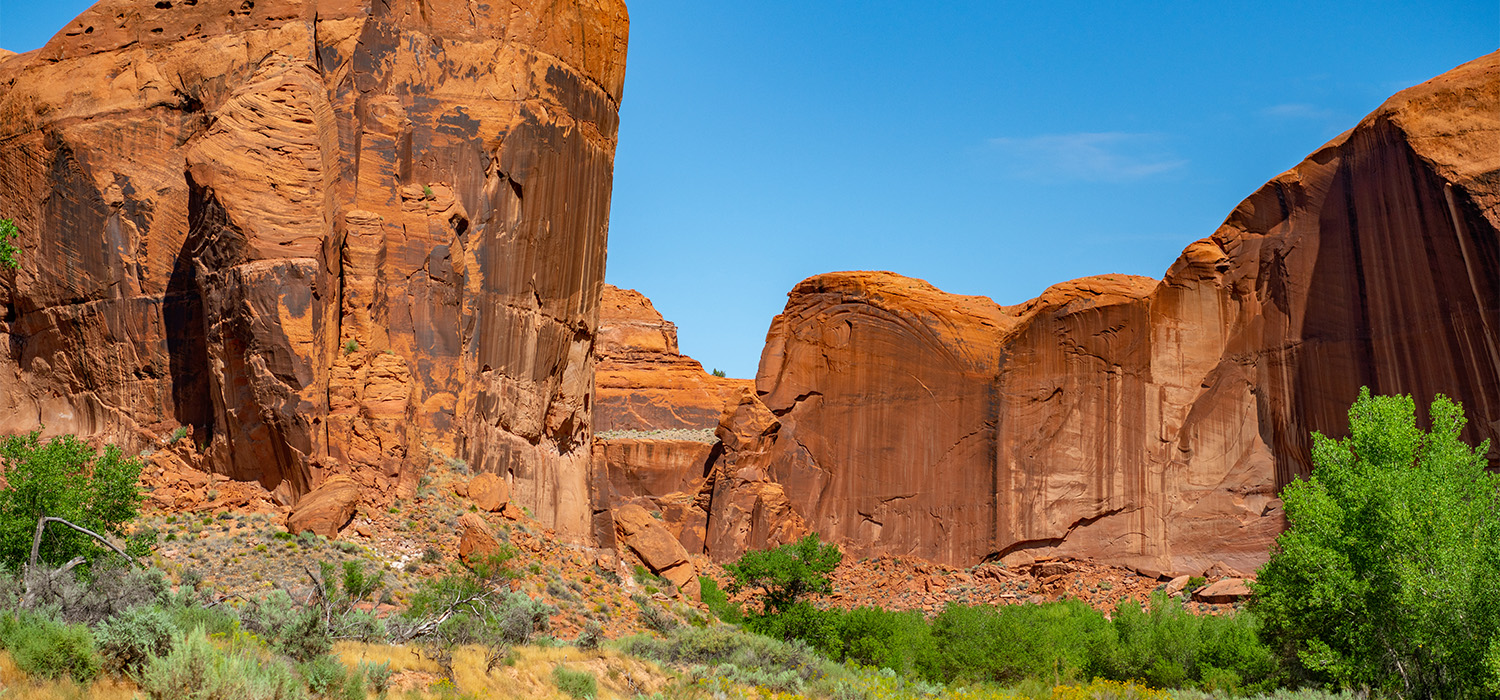
A developer backed away from pursuing permits to build two hydroelectric dam projects on the Little Colorado River above its confluence with the Colorado River in the Grand Canyon. We’ll continue to follow the lead of the Navajo Nation, Hopi Tribe, and Hualapai Tribe in opposing a third proposed dam in Big Canyon and advocating for keeping the lower Little Colorado River flowing free.
 Paria River, Grand Staircase-Escalante National Monument. TIM PETERSON
Paria River, Grand Staircase-Escalante National Monument. TIM PETERSON
Several proposals to draw more water out of the ground in the monument to water cattle have been delayed for the foreseeable future, due to our advocacy during a time of extreme drought.
The new proclamations for the restored Bears Ears and Grand Staircase-Escalante national monuments both authorize voluntary grazing permit retirement. This clears the way for permanently removing livestock from arid desert lands to protect the environment.
 The sun sets over the community of White Mesa. BLAKE MCCORD
The sun sets over the community of White Mesa. BLAKE MCCORD
The U.S. Environmental Protection Agency prohibited the White Mesa uranium mill, a mile east of Bears Ears National Monument, from processing and discarding radioactive waste from Superfund sites. This represents an important step in work led by the Ute Mountain Ute Tribe to protect the landscape and the White Mesa Ute community from radioactive pollution.
We filed an administrative protest with the Utah Division of Water Rights seeking the forfeiture of a key water right Estonian-owned Enefit American Oil Co. plans to use for its massive proposed oil shale mine and processing complex not far from the confluence of the White and Green rivers. If victorious, this protest could conserve significant water resources and prevent the release of greenhouse gases into the atmosphere.
 Volunteer Elisabeth Evans removes invasive species in Utah's Pando aspen grove. BLAKE MCCORD
Volunteer Elisabeth Evans removes invasive species in Utah's Pando aspen grove. BLAKE MCCORD
More than 250 hardworking and passionate Grand Canyon Trust volunteers devoted their time, energy, and labor to 20 restoration and citizen science projects, in person and online, surveying streams, restoring springs, and documenting declining species to provide the data the Trust needs to advocate for protecting springs, forests, and habitat.
 Conservation Director Travis Bruner directs program work across the Grand Canyon Trust.
Conservation Director Travis Bruner directs program work across the Grand Canyon Trust.

Also in this issue:
A look at top priorities for improving monument management, from science to Indigenous traditional knowledge. Read now ›